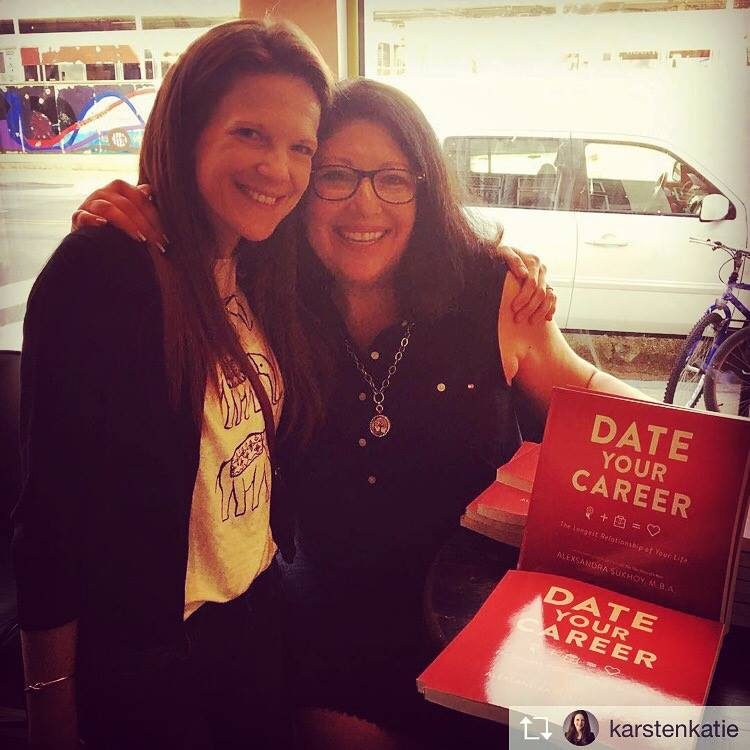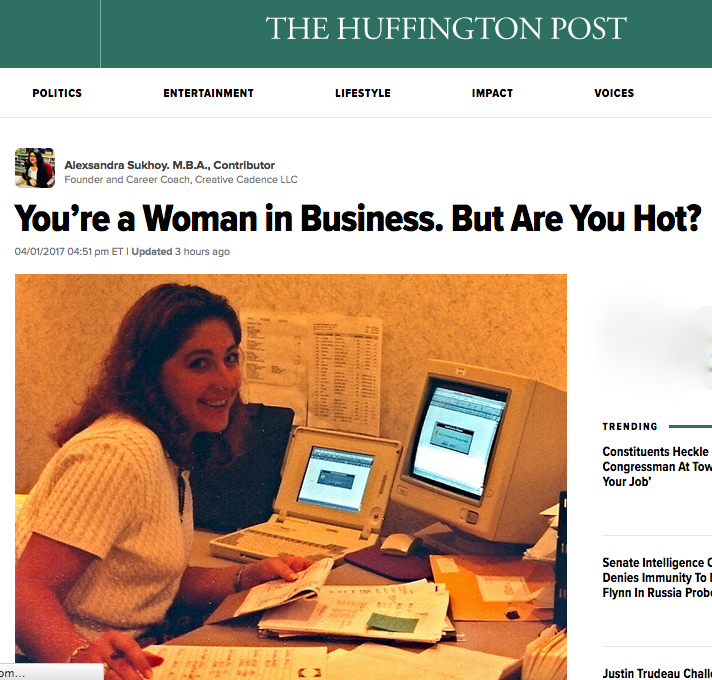- Begin Your Growth Plan Today!
- (216) 410-3825
- info@creativecadence.com
Gen X in Film: Jagged Little Pill
Gen X in Film: Jagged Little Pill
Written by Alex Sukhoy & Ben Lieblich for Film Slate Magazine
Tuesday, 25 May 2010 23:19
It all started with a little pill. In 1957, G.D. Searle & Company released Enovid, a medicine that treated menstrual disorders. Shortly thereafter, an epidemic of these disorders broke out as women determined that the drug’s side effect – prevention of pregnancy – might not be so bad. Approved for contraception just as children of the 1946–1964 Baby Boom were coming of age, the Pill gave Baby Boomers a power no prior generation had ever known: the power to control whether to have children, how many to have, and when to have them.
In the Sexual Revolution that followed, the Boomers resolved to mold a new society to fit their values. Women who dreamed of an education, a career, a marriage and a family could finally have it all. The sexes were becoming equal and adults were freer than ever to pursue their dreams. Home sizes grew. Family sizes shrank. Ironically, all of this progress took a toll on the generation that followed. The children born between 1965 and 1979 – Generation X – found themselves home alone as their modern mothers chose to stay in the office and to have one- and two-kid families. Divorce rates spiked. Husbands left their traditional wives for liberated women. Wives left their homes to discover themselves. With family members living separate lives anyway, the notion of staying together “for the kids’ sake” seemed dated. And the children felt it.
The history of film documents this tectonic shift. The examination of generational conflict on film is nothing new. From “The Jazz Singer” (1927) to “Rebel Without a Cause” (1957), the Boomers and their parents had been raised on movies that portray the struggle of young adults trying to reconcile their parents’ values with a changing world.
What made the Baby Boomers unique is that they popularized movies in which characters go to bold extremes to distance themselves from their parents. “The Graduate” (1967) is iconic because the children in the movie – Ben (Dustin Hoffman) and Elaine (Katharine Ross) – end up not only rejecting the older generation’s values, but, after taking guidance, money and sexual pleasure from them, rejecting the parents themselves.
Films that followed revealed an ever-widening moral chasm between the Baby Boomers and the society from which they had emerged. “Easy Rider” (1969) broke taboos, promoting free love and casual drug use. And the walls came tumbling down in 1972, when Boomers packed the theaters to make “Deep Throat” one of the most profitable movies of all time and “Last Tango in Paris” one of the most controversial.
The Boomers’ willingness to embrace anti-social characters as part of the process of generational upheaval paved the way for movies that captured the angst of Generation X. In most of the classic Gen X films, parents are missing, leaving the children to create their own societies. The absent elders serve as voiceless foils against whom the children push. Typically, the kids are shown initially as archetypes – nerd, princess, jock, etc. – but over the course of the film, they learn to appreciate each other as unique and special individuals.
One of the best installments in the genre is also one of the earliest. “The Bad News Bears” (1976) tells the story of a baseball team comprised of children who fit every possible outsider stereotype. With wimpy, obese, nerdy, hostile, African-American, and non-English speaking players, the one thing they had in common is that no other team will have them. Hired to manage the team is washed-up minor leaguer Morris Buttermaker (Walter Matthau), who makes it clear early on that he is only coaching little league because he needs the money.
After his charges embarrass themselves on the field, and after he gets abused for his team’s poor play, Buttermaker goes hat-in-hand to ask Amanda (Tatum O’Neal), whose mother Buttermaker used to date, to pitch for his team. Amanda is on the cusp of puberty and is torn between her tomboy love of baseball and her future as a woman. O’Neal won her Oscar at age 10 for “Paper Moon” (1973), in which she portrayed a little girl desperate to be loved and to have a father. In “The Bad News Bears,” she plays a character with similar motivations.
Amanda lives in a barely functional one-parent home, and her relationship with Buttermaker provides heart and focus to a broadly comic film. Buttermaker, who initially wants no part of being a father-figure, gains a measure of redemption by learning to accept her friendship. He gains the rest by finally seeing his charges as they see themselves: as worthy people, not stereotypes.
The film’s ending is flawless. Buttermaker lets the biggest outcasts on the team take the field just when it looks as if the Bears will win the championship game against their hated rivals. The misfit kids manage to have a great time, even as they let victory slip away – and therein lies the lesson. While the other teams, prodded by their values-challenged parents, focus on winning at all costs, the Bears value each other and the fun they have together. Before the term is even coined, Gen X kids fight for themselves and for each other, against the whole world if necessary.
Ten years later, “The Breakfast Club” (1985) captured the Gen X high school experience with unflinching honesty. Its director, John Hughes, fashioned a body of work (including “Sixteen Candles,” “Weird Science,” and “Ferris Bueller’s Day Off”) in which rich kids and poor kids are forced to confront each other’s values. In a typical Hughes film, a backdrop of McMansions fosters initial envy for the manicured-lawn lifestyle lived by the privileged few. Eventually, however, he reveals that that the bigger the house, the bigger the distance between parent and child.
“The Breakfast Club” stands out for the way it confronts stereotypes and articulates the frustrations of Gen X. Molly Ringwald, Anthony Michael Hall, Emilio Estevez, Judd Nelson and Ally Sheedy play five high school stereotypes who are brought together to serve Saturday detention under the watchful eye of Boomer-aged Principal Vernon (Paul Gleason). The Princess’ parents don’t speak to each other, the Brain’s dad won’t tolerate anything less than a 4.0 GPA, the Jock’s father encourages bully behavior, the Basket Case’s parents ignore their daughter, and the Criminal’s alcoholic father burns cigar rings into his son’s arms.
The story arc flows through one day, mostly in one room, showcasing with devastating accuracy the loneliness of these neglected and abused kids, the price they are willing to pay to make a human connection and the contempt with which they view their self-absorbed elders. The genius of the film is that no matter what your socio-economic, parental, ethnic or sibling status was in the mid-1980s, if you were a teenager, you could identify with at least one of the characters.
In one of the film’s most poignant scenes, Principal Vernon confides in the school’s janitor, Carl (John Kapelos), “Now this is the thought that wakes me up in the middle of the night: that when I get older, these kids are going to take care of me.” The janitor’s simple reply, “I wouldn’t count on it,” gives the whole of Hughes’s view on the relationship between the generations.
As the Gen Xers came of age, they faced challenges remarkably similar to the Boomers’, including an uncertain economy, a war overseas and a culture rapidly becoming ever more materialistic. Once again, science produced a pill to solve the problem. Eli Lilly released Prozac into the U.S. market in 1987, just in time to help the Gen Xers cope with their anxiety over the apparent Japanese takeover of America and the October 1987 Black Monday stock market collapse.
“Reality Bites” (1994) takes this anxiety as background and gives us an ensemble of characters terrified of post-college adjustment and confronted with student loans and a heroin-induced anorexia grunge culture. The Houston setting, a metaphor for the Bush oil era, proved prescient. In January 1991, America waged its first war to protect access to Middle East oil. “Reality Bites” anticipated the invade-and-withdraw cycle that would follow, showing the hopelessness of new adults who cannot count on the authenticity of anything, even war.
As in all classic Gen X movies, the parents are absent, leaving the main characters to work out for themselves the dynamics of survival and connection. A love triangle forms between aspiring producer Lelaina (Winona Ryder), disgruntled song writer Troy (Ethan Hawke), and rising corporate executive Michael (Ben Stiller, who also directed). Lelaina takes a series of jobs in which she feels uninspired and abused. To make ends meet, she uses the one economic resource at her disposal: a gas card her father gave her so that she can drive to interviews. Lelaina figures how to buy strangers’ gas in return for cash.
Ultimately, Lelaina is forced to confront the grim economic realities facing her, just as she is forced to choose between the two men. Troy and Michael symbolize the limited options most Gen Xers felt that they had at the time – fiscal security vs. the pursuit of creative passions. The reality of the film is that most Gen Xers felt like Lelaina, stuck somewhere in the middle, knowing a choice will eventually need to be made.
As the 1990s came to a close, excitement and Y2K dread greeted the new millennium. The government, fearing that a combustible combination of zeroes and ones would explode the banking system, flooded the economy with cash. Then, not even two years after people rang in a new future, September 11 forever changed everything. The terrorist attacks, the ready availability of now devalued currency and the dot-com bust compounded the uncertainty of the generation that was just beginning to taste adult responsibility and success.
Into a decade of growing financial, political and even moral uncertainty, Gen X visionary Wes Anderson released “The Royal Tenenbaums” (2001). Anderson, whose films generally portray social isolation, created an ensemble piece around the theme. The Tenenbaum children have seen the world, care not for it, and, simultaneously, decide to come home – all while being perfectly aware that home is broken. The family collapsed when Royal Tenenbaum (Gene Hackman), its patriarch, simply left. Etheline Tenenbaum (Anjelica Houston), its matriarch, determined that each child would shine in a specific endeavor, deprived her brood of the ordinary joys and pains of growing up.
Now in adulthood, the children are tormented by their own crises. Margot (Gwyneth Paltrow) separates from her husband and feels no connection to the world. Chas (Ben Stiller), who lost his wife in a plane crash, raises his children in panic and fear. Richie (Luke Wilson) becomes suicidal over an inexpressible love for Margot, his adopted sister, and a very public meltdown that ended his tennis career.
“The Royal Tenenbaums” derives both plot and pathos from the return of Royal to the family homestead, a mansion in the Bronx. He claims to be dying, and his family feels compelled to take him in. They are at first suspicious of the old man, but eventually they become receptive to his overtures of reconciliation when it becomes clear that he sincerely wants a relationship with them all.
In caring for Royal, and in letting him care for them, the Tenenbaum children rewrite the rules of the Gen X story. They see so clearly the damage caused to them by their parents, yet they are willing to forgive. The lesson they have learned – that a family is what you make it – applies to all who are willing to be authentic and to let others be themselves. Even parents. This is the ultimate rebuke to the Baby Boomers.
“The Big Chill” (1983), which summed up Boomer adulthood and completed the process that “The Graduate” had begun, features no happy reconciliation between parent and child. Instead, the ensemble cast reconciles with each other, forgiving themselves for the loss of youth and idealism. Their break with prior generations is so complete that all they have left is one another. Perhaps the lesson of Generation X is that the parents were never evil, just misguided. Always, there was hope for the imperfect yet comforting reunion that “The RoyalTenenbaums” delivers.
And then the reset button was pressed. Released eight years after “The RoyalTenenbaums,” “Up in the Air” (2009) placed the exclamation point at the end of the zero decade. It speculated on what would become of a world in which Gen X remained untethered to its forebears and unguided by anything other than self-determined values and expectations.
Ryan Bingham (George Clooney) is a man unable to commit to anything or anybody. He feels best when he is flying 20,000 feet above the earth. His job, confronting the victims of corporate downsizing, makes Ryan the human face of the absence of personal connection. The joy Ryan takes in his job is contrasted against the darkness felt by the breadwinners whom he dutifully informs that, in effect, they no longer hold any professional value. Mixing actors with real people who have recently lost their jobs, the film walks the line between fiction and reality.
Ryan is a late Boomer and feels no remorse or regrets. His Gen X love interest, Alex (Vera Farmiga), knowingly pays an enormous price for her no-strings-attached attitude. Young protégé Natalie (Anna Kendrick) – the archetype of Gen Y – remains un-jaded, believing that marrying the right man, in her twenties, even at the expense of her career, is the correct path for any young woman. All the while, she rises in the corporate ranks because of her tech know-how. “Up in theAir” perfectly contrasts three different generations and reveals their unique perspectives. As the title suggests, given where the world is today, nothing is certain, regardless of one’s age, occupation or gender.
Much as in corporate boardrooms, Boomers still have a chokehold on the top jobs in Hollywood. For example, the most recent Oscar competition pitted Boomer director James Cameron against Boomer director, and ex-wife, Katherine Bigelow. They both came out winners, as she grabbed the statue and his film set box office records. A few directors seem poised to bring Generation X to prominence both behind the camera and on the screen.
But until they do, filmgoers will be forced to look backward for insight into the generation. Fortunately, an excellent vehicle is available for doing so. “Hot Tub Time Machine” (2010) mocks, with hysterical results, the Gen X movie canon, including every popular film John Cusack ever made. Given the stochastic seriousness of the past forty years, one can only hope humor will save the day. John Hughes would have approved.
Film Poster Image: IMDb.







1 Comment
Thanks for sharing. I read many of your blog posts, cool, your blog is very good.